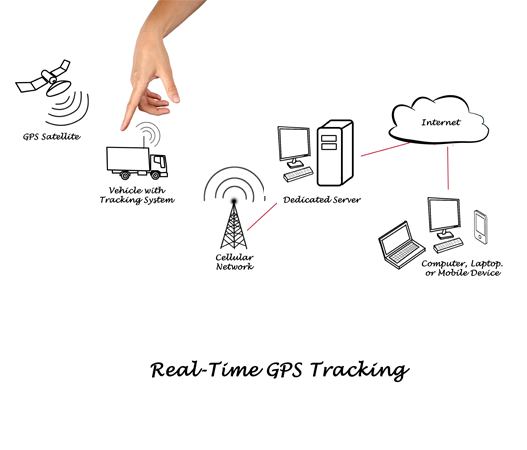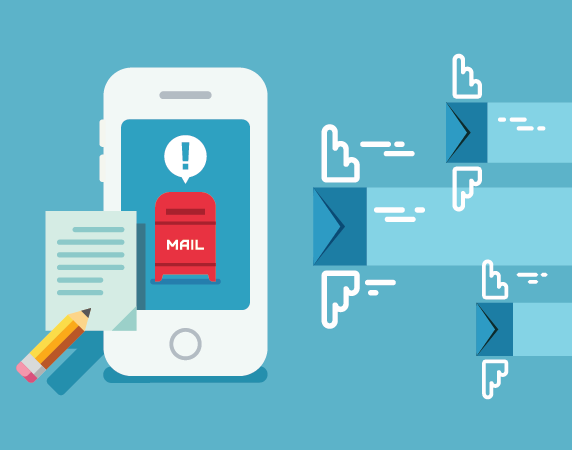Tag: field service app
Did you know that there are more than 8 million Uber users in the world? It is available in over 400 cities and almost 68 countries, and it is still growing.
Why do you think it is one of the most preferred taxi services?
Because it sends a car to your doorstep up to 2 times faster than a regular taxi service.
Similarly, Bizzy is another popular application that shows you where your friends have had dinner lately and also their recommendations.
What is common among such popular apps?
The Geolocation feature. Yes! It is the next big thing in a lot of industries, influencing not just consumer habits, but also the enterprise, more dramatically – in the field service industry.
It started off with cloud computing allowing employees of an enterprise to work mobile, from wherever they want, while still staying connected to office. Now, with geolocation, the transformation in the field service industry is more real and significant.
Considering how field service has always been an industry run on clipboards, spreadsheets and the like, cloud-based mobile solutions have indeed brought a substantial change in work efficiency. Earlier, technicians only had a little more than a phone, to connect with their main office. Now, with the advent of smartphones with built-in GPS capabilities, the field service industry can leverage the power of real-time geolocation services.
Here are some ways in which geolocation is revolutionizing the field service industry:
- Real-time tracking of location – This is one of the more obvious benefits of the geolocation feature. It allows the dispatchers to say exactly where their techs are, analyze their transit to see if they are stuck on the road, track the status of their task, plan their breaks etc. On the whole, it allows dispatchers to assign and reassign jobs according to the technician’s schedule.

- Performance management – As an extension of the above advantage, dispatchers get to know how much work and how well, their technicians are performing. They also get to see how many breaks they take, how long they break, whether they make early starts or end shifts early etc. This way they get to analyze and manage the performances of their field technicians effectively.
- Effective labour billing – Accurate tracking of worker timings leads to an automatic log of arrival and departure times, allowing for effective labour billing.
- Better communication – Geolocation put together with cloud services can benefit the customer too in huge ways. For example, a text or an alert can be automatically sent to the customer, when the technician is reaching the location or is exactly 15 minutes away from the location of service. Better scheduling leads to better insights for the dispatcher about creating more realistic timelines.

- Better collaboration – When on duty, if a service technician finds himself short of essential parts or tools, geolocation helps to track other technicians who may be nearby, from whom the shortage can be compensated with. Their inventories can be synced too so that it would be easy to identify who has the required tools and connect with them on the fly. This way, the job can be completed on the same day, rather than the customer having to reschedule the entire job. More like smart work!
- Efficient driving – Geolocation helps to analyze driving routes and give updates to technicians about traffic and weather issues.
Geolocation thus helps in incorporating more transparency and accountability into the business, leading to faster service delivery and in turn an improved bottom line.
What other benefits do you think can be added to this list? Let us know in the comments below.
Stay up to date on what's new

Featured Blogs
Stay up to date on
what's new



Talk To Our Experts
The field service industry is rich with technology these days, equipping field service technicians with all the right tools to improve their productivity and efficiency. Especially with mobility being mainstream, field representatives are able to be much more effective in their field today, than they have ever been before.
So how do mobile field service solutions help to create a huge impact on customers and eventually improve profits?
Only the right requirements
A field service mobile app that has only the necessary features and requirements will be more effective than one which is overloaded with features.
For example, a lot of companies make the mistake of creating a mobile replica of their CRM for their field service app. Now, this is a bad idea, because first of all, it would be quite an extensive project, not to mention the complexity and costs involved.
Secondly, a copy of the entire database of the company’s customers is not really something that a field representative would need for his work.
Here are some of the most effective features that can be included in a field service mobile app:
- Centralized work order scheduling and tracking – Being able to view and keep track of all work orders from a single easy-to-use dashboard is one of the most important features of a field service mobile application. It helps the managers monitor work orders as well as the progress made by the field workers, thereby enabling them to make better and faster decisions.
- Priority wise notifications –
 Considering the busy schedule of field workers, it is practically difficult to keep checking their mobile apps for any tasks that need to be completed. This may also cause delays in tasks being seen and hence increase in completion time. Hence, it is important to have an automated status update feature, which prompts the field worker for every new work assigned, and allows them to accept it or reject it too so that it can be reassigned to the next worker.
Considering the busy schedule of field workers, it is practically difficult to keep checking their mobile apps for any tasks that need to be completed. This may also cause delays in tasks being seen and hence increase in completion time. Hence, it is important to have an automated status update feature, which prompts the field worker for every new work assigned, and allows them to accept it or reject it too so that it can be reassigned to the next worker. - Geolocation – Geolocation helps to track and identify the location of the field workers, according to which the dispatchers can assign and reassign tasks.
Take a look at our blog 5 Key Features That Maximize Efficiency of a Mobile Field Service Application to know more.
Forms and questionnaires
 Field service representatives might need to collect a lot of information while they are at their site, which they might need to enter into their systems, once they are back in office. This can be avoided with the help of a mobile app, as it contains different electronic versions of feedback surveys, questionnaires and the like. The information can be directly entered into the app right in the beginning, and it gets automatically uploaded into the CRM system, which can then be used by field service representatives as well as the marketing department for their analysis.
Field service representatives might need to collect a lot of information while they are at their site, which they might need to enter into their systems, once they are back in office. This can be avoided with the help of a mobile app, as it contains different electronic versions of feedback surveys, questionnaires and the like. The information can be directly entered into the app right in the beginning, and it gets automatically uploaded into the CRM system, which can then be used by field service representatives as well as the marketing department for their analysis.
The right hardware
An enterprise field service mobile application, fit into a 4 or 5 inches mobile screen, may not be the best of ideas. Not only is it quite a task for the UI developers, it also makes job for field technicians more difficult, as they definitely need more space to make the best of the app features. Tablets may be more ideal for tailoring mobile field service software. About 8 to 10 inches of space, may be more convenient for field technicians to scroll through their app and utilize its features, especially filling forms and questionnaires.
Different kinds of information can be best displayed in different kinds of hardware or devices, like tablets for forms, mobiles for updating and retrieving information and the like. Hence, the right hardware can make a huge difference.
Taking care of these points can help you make the most out of your mobile field service software, and increase the efficiency of your field service workforce. It also helps you better manage them.
Talk to our field service management experts to create an effective field service management solution for your business.
Stay up to date on what's new

Featured Blogs
Stay up to date on
what's new












